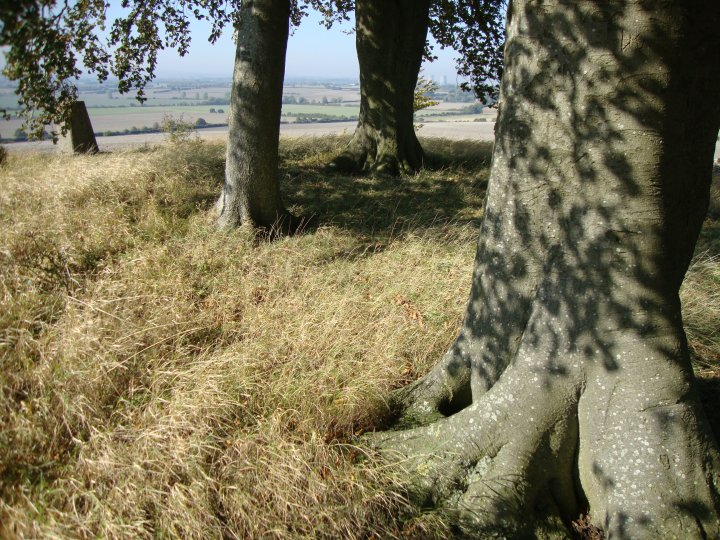Details of barrow on Pastscape
A bell barrow, known as Great Barrow, located on Weasenham Lyngs. It is part of a wider, dispersed round barrow cemetery and was formerly part of a more extensive grouping, including two bowl barrows which were located between 100m-200m south of the Great Barrow. The two bowl barrows were archaeologically excavated in 1972 and are now destroyed.
The bell barrow is visible as an earthen mound surrounded by a ditch with an internal and external bank. The mound, measuring 30m in diameter and standing up to 2m high, is situated on a roughly circular platform which measures about 47m north west-south east by 42.5m. The berm, between the edge of the mound and the internal bank, measures between 3m to 5m in width. The slight internal bank, up to 1.5m wide, stands at the edge of the platform, bordering the inner edge of the ditch except on the south side of the barrow where the ground appears level. The ditch measures up to 3m wide and 0.5m deep and is, in turn, enclosed by an external bank measuring up to 3.5m in width and up to 0.5m high. There is a slight depression in the centre of the mound and a shallow, semicircular depression on its east side.
This monument class is rare in Norfolk, and the bell barrow is of unusual form in that it includes an external bank.





